Anubias barteri is a versatile semi-aquatic plant with a lot to offer.
Popular in both aquascaping and terrariums, it’ll happily grow as an epiphyte attached to hardscape branches or submerged in water.
This beauty can go just about anywhere! (With some important caveats).
Its dark green leaves and compact growth add a lovely contrast and let you get creative with some 3d planting. Plus, it comes in a wide range of varieties and cultivars, so you can choose exactly what size/shape fits your space best.
As one of the most miniature varieties, we’ve used Anubias barteri var. nana ‘Mini’ to great effect, and in this guide, I’ll show you how!
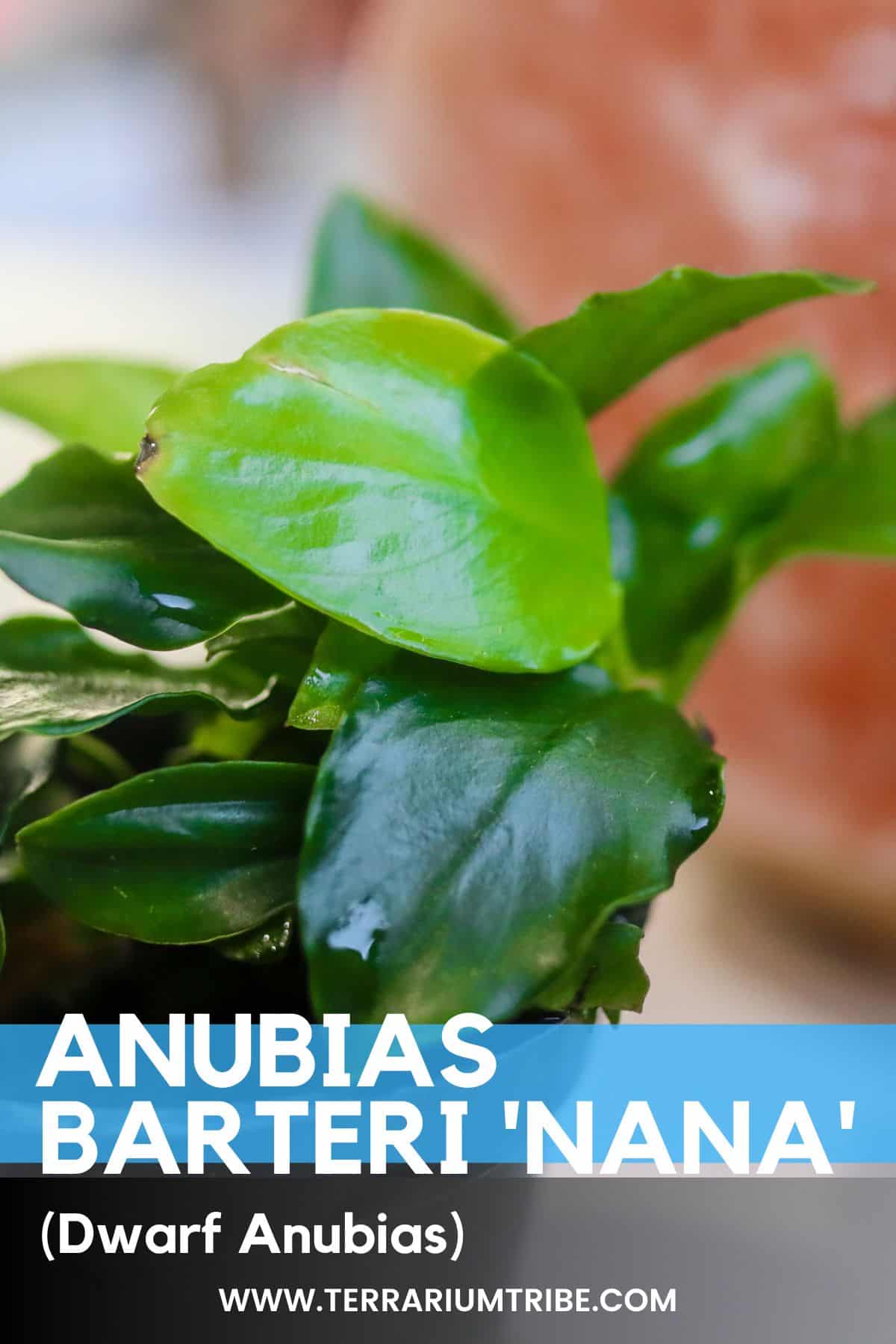
Where to Buy Dwarf Anubias Plants
See the links below to purchase from reputable terrarium plant shops and marketplaces (may include affiliate links).
Anubias barteri Care & Growth
| Plant Type | Epiphyte |
| Lighting | Low – medium indirect light |
| Temperature | 60-80°F (18-26°C) |
| Watering | Regular, even moisture |
| Humidity | High humidity (70-100%) |
| Growth | 2-5 inches |
Lighting Requirements
The Anubias genus of plants is named after Anubis, the Egyptian god of the afterlife.
Which seems fitting for a family of plants that thrives in the dark!
As you might imagine, the stunning deep green leaves of Anubias barteri are a big pull factor for many hobbyists. Still, the dark pigmentation also hints at its powerful photosynthesizing abilities. So, it’s fair to say this is one of the true low-light terrarium plants.
In practice, Anubias barteri will manage on minimal indirect light each day.
As part of a healthy tropical terrarium, this plant will be fine in a range of lighting conditions.
However, like other tropical plants, it’s best to keep this one out of direct sunlight. Not only can it damage the leaves, but it’ll dry out that much faster, too (which is not good for a semi-aquatic plant).
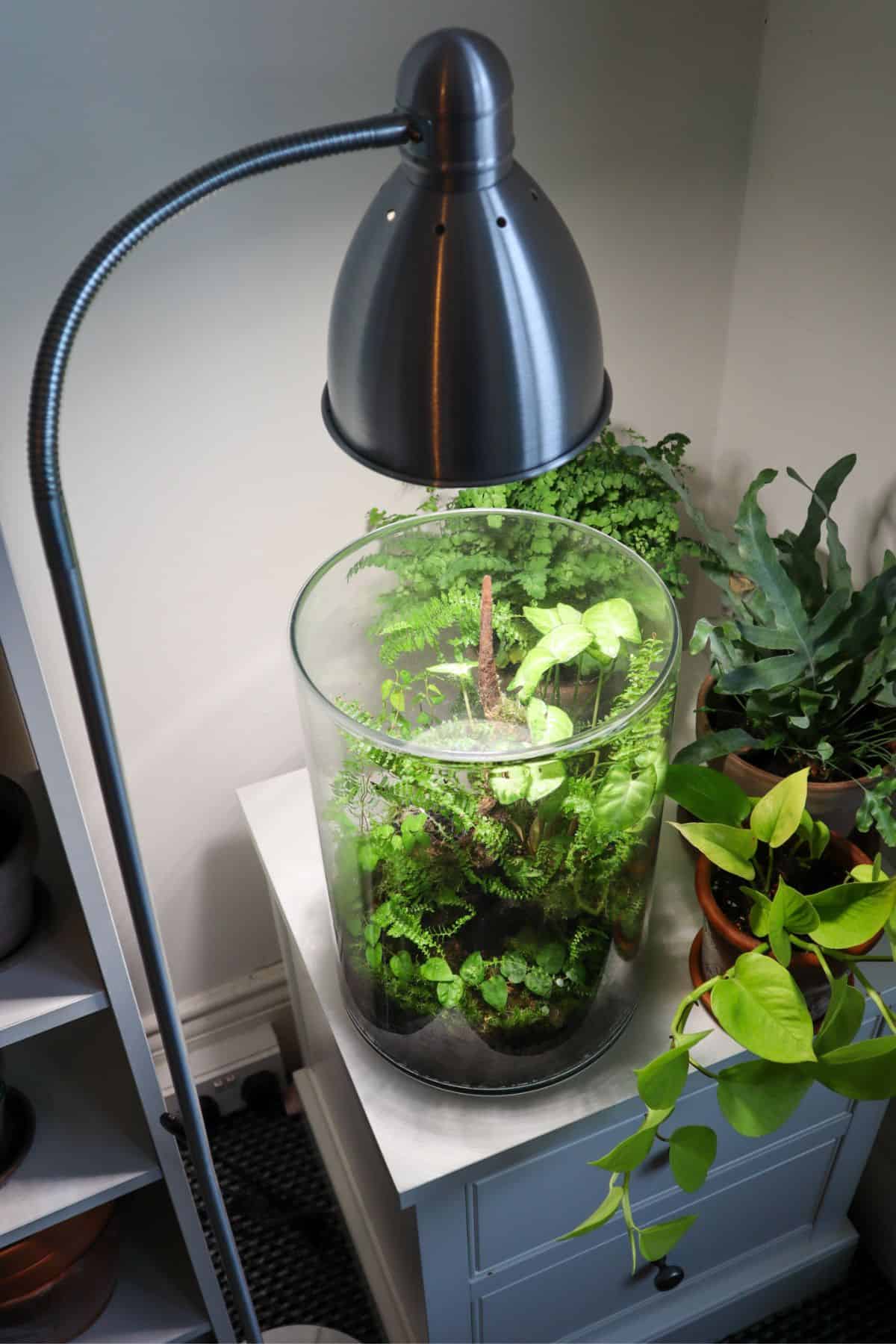
Balancing Watering & Humidity
As a semi-aquatic species, you probably won’t be surprised to hear that Anubias barteri needs consistent moisture. Much more so than most other terrarium plants.
It’ll likely die very quickly if allowed to dry out, even for a short time.
Keeping the humidity as high as possible (as close to 100% as possible) will help greatly. Which usually isn’t too difficult in a closed terrarium, but it’s difficult to maintain if you need to open it regularly to mist the plant.
See my dilemma?
In fact, I found maintaining the balance of watering and humidity to be the most challenging part of keeping Anubias in closed terrariums (by far). I tried misting it regularly myself, but I indirectly overwatered the rest of the plants in the process…
Not ideal.
In the end, I did manage to keep my Anubias alive once the terrarium equalized (and I left it alone), but I wouldn’t say it was thriving.
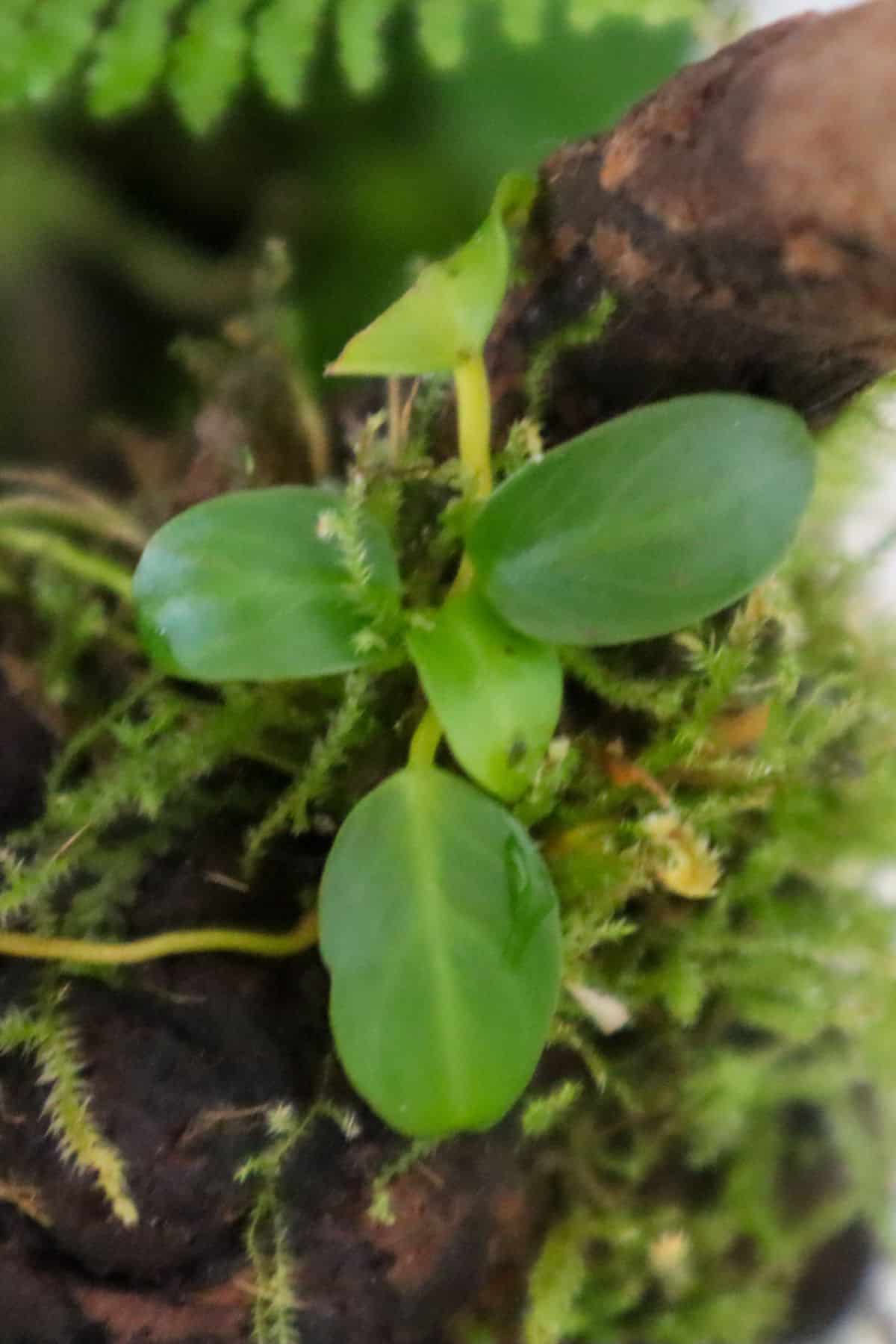
Personally, I think they’re better suited to tank-style terrariums rather than your typical tabletop glassware. With the help of a misting system and ventilation, it’ll be much easier to keep it regularly watered without collateral plant damage.
On the temperature front, Anubias barteri will do fine at a typical room temperature range from 21-27°C (70-80°F), but the higher range will help maintain that high humidity.
How to Plant Anubias in Terrariums
Nine times out of ten, Anubias barteri will be planted epiphytically when used in terrariums.
The important caveat I alluded to in the introduction is that these plants don’t like to have their rhizome buried. The rhizome is the thicker “main” root from which the plant grows.
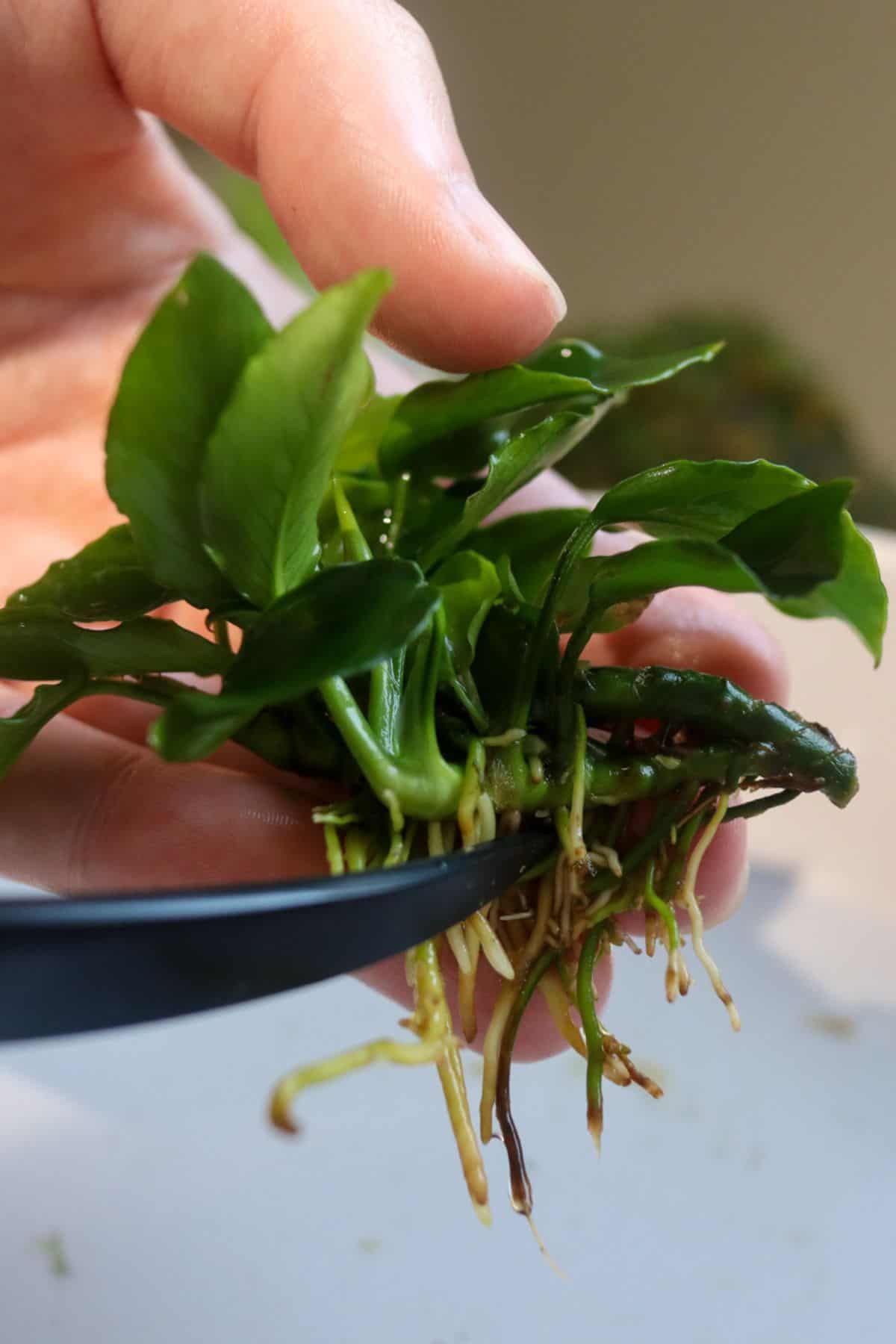
If you bury the rhizome in a soil/substrate, it’s prone to rot quickly. So it’s best to either place it directly into a hardscape crevice/crook or gently place it on the surface of the substrate (depending on where you’d like to plant it).
Where many epiphytes still need a pocket of substrate to keep them hydrated, Anubias plants can be added directly to hardscape branches.
However, it can be helpful to add them along with a chunk of moist sphagnum moss – both as a way to secure them and supply some consistent moisture.
Size & Growth
The variety we’re using, Anubias barteri var. nana ‘Mini,’ is a truly compact plant.
It won’t grow more than a few inches when planted in terrariums, so you can be confident that it won’t outgrow its original placement.
I found it to attach itself to adjacent rocks and branches quite quickly, and it’ll send out longer roots/shoots as it matures. However, it’ll take a month or so before it grows any new leaves.
Anubias Varieties & Similar Plants
There are a lot of Anubias varieties on offer today.
From larger foliage plants that look like Java Ferns down to tiny, highly-variegated new cultivars.
That said, though the genus has many species used in aquariums, only the dwarf varieties are typically used as often as closed terrarium plants, e.g., Anubias nana ‘Petite,’ ‘Mini,’ ‘Coin,’ and ‘Bonsai.’
How to Propagate Anubias Plants
You can propagate Anubias plants by splitting the rhizome, i.e., chopping it into individual plants.
It’s a good way of creating smaller plants if you accidentally buy a larger Anubias (like I did) with the Anubias Nana ‘Coin.’ It takes a fair bit of force with some aquascaping scissors, but I think you’d get a cleaner cut with a razor blade.
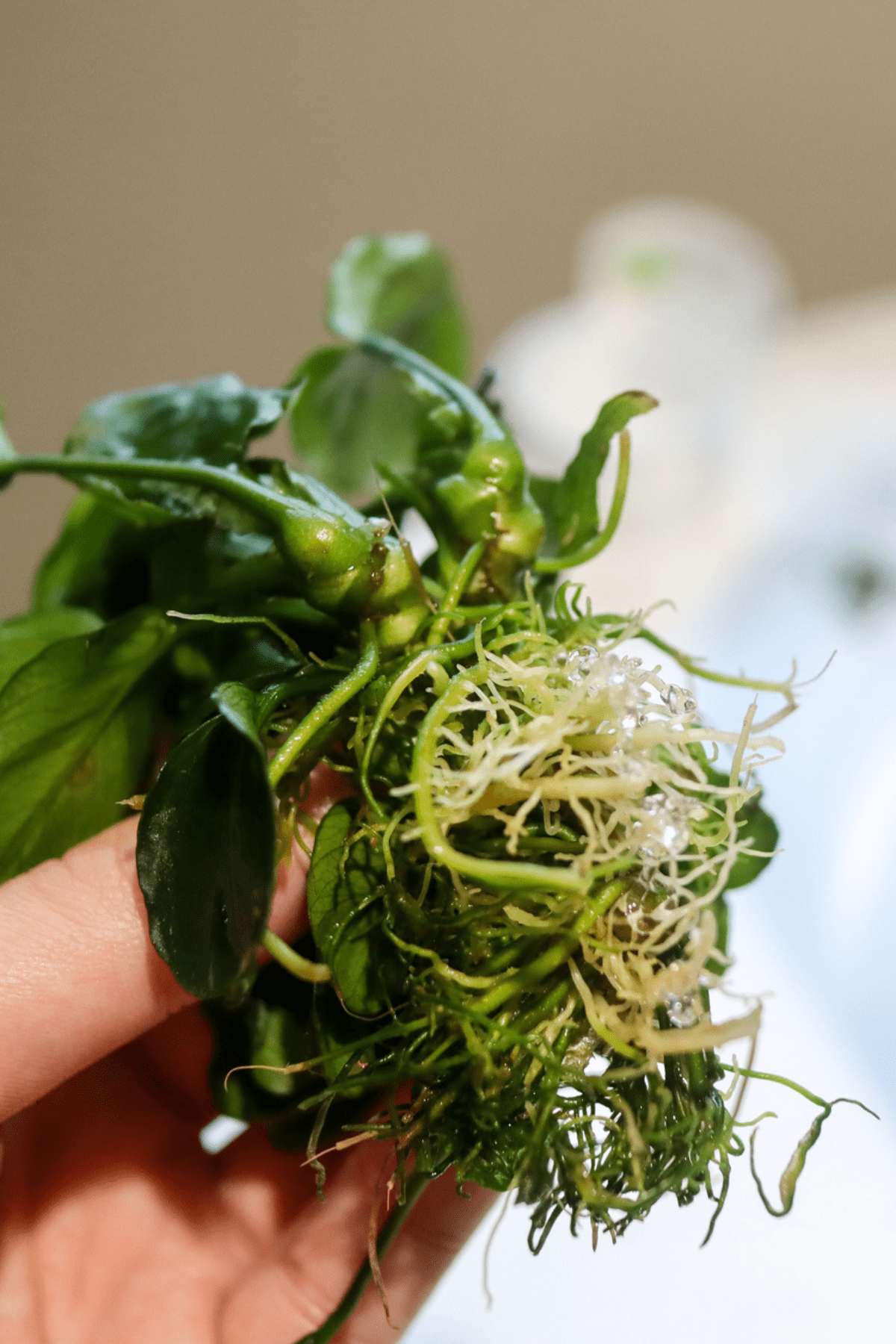
Naturally, having healthy roots and leaves on each side of the cut will give them all the best chance of success. Plus, mature plants tend to form new shoots that can be more easily harvested for new plants anyway.
